2019 Gear Review
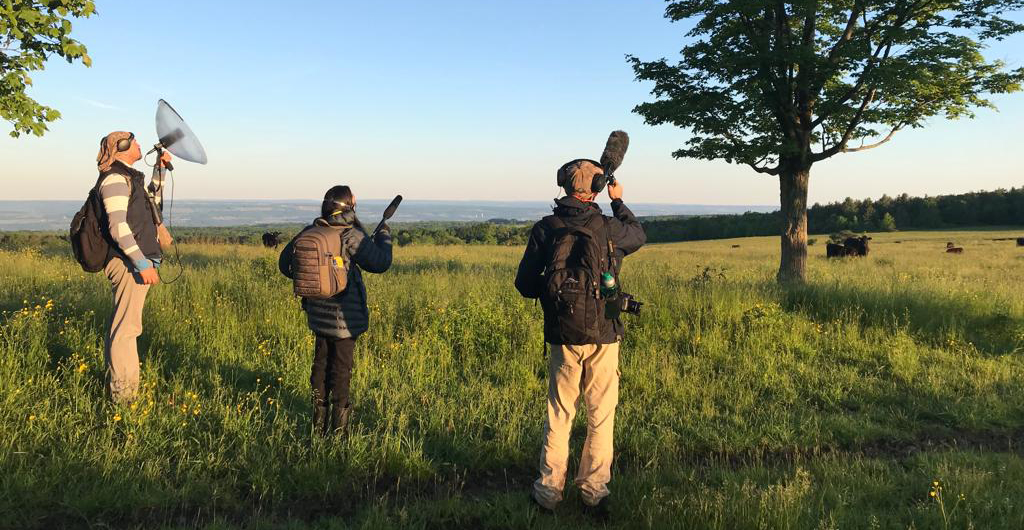
Written December 2019
2023 Update: Many of these models have been discontinued since this article was written. The MixPre-3 is still an excellent choice, but the Zoom F3 has become another popular contender with some major advantages. The principles of gear choice outlined below remain relevant, but please visit our Equipment Recommendation page for some updates.
At first glance, sound recording is simple: find a bird that’s singing, point the microphone at it, and hit record. Sounds easy, right? Start digging into the specifics, though, and things quickly become more complicated. What kind of microphone should I use? Does my recorder allow uncompressed file formats? How long will the batteries last?
What at first seemed simple leads to a host of questions that can make choosing your equipment a bewildering experience. To make this process simpler for you, we researched a variety of sound recorders and microphones and evaluated each on a suite of categories. Below you will find a summary of our tests to help you make the best decision based on your budget and recording objectives.
Not surprisingly, purchasing sound recording gear isn’t all that different from purchasing a camera lens or binoculars: you get what you pay for. The best overall equipment tends to be on the high end of the price scale, but we tested multiple budget-friendly options, with clear winners and losers. In the end, you don’t need to break the bank to make good recordings!
Continue on for our review of recorders, or skip ahead to microphones.
Recorders
We tried out seven currently available (December 2019) recorders, ranging in price from the Sound Devices MixPre-3 ($650USD) to the Tascam DR-05X ($99USD). While these included some of the most popular recorders, many more options exist, so check out our main digital recorder page for definitions of features as well as factors to consider when choosing a recorder.
All seven of the recorders we tried functioned well, but some definitely stood out from the rest.
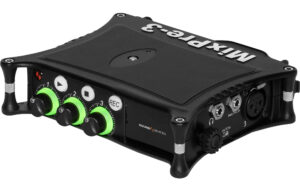 |
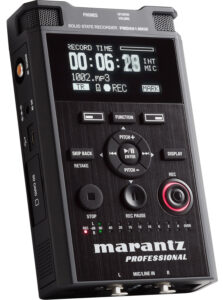 |
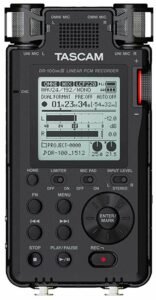 |
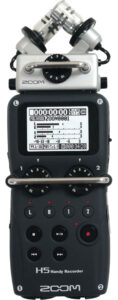 |
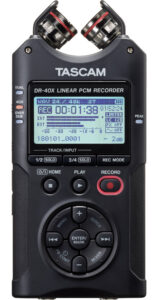 |
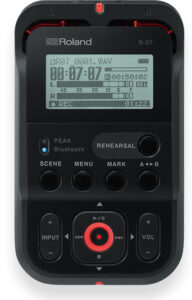 |
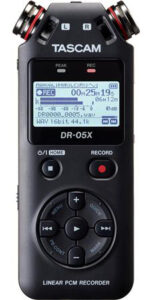 |
|
| SoundDevices MixPre-3 II | Marantz PMD661MkIII | Tascam DR-100MkIII | Zoom H5 | Tascam DR-40x | Roland R-07 | Tascam DR-05x | |
| Price (Dec 2019) | $650 | $350 | $300 | $280 | $200 | $190 | $100 |
| Weight | 16.8 oz / 500 g | 12.5 oz. / 352 g | 13.2 oz. / 375 g | 9.5 oz / 270 g | 8.3 oz. / 213 g | 6 oz / 150 g (incl. batteries) | 4.1 oz. / 116 g |
| Sound quality* | Excellent | Good | Good | Good | Fair | Fair | Fair |
| Connection options | XLR | XLR | XLR | XLR | XLR | Mini (3.5mm) | Mini (3.5mm) |
| Phantom power? | Yes | Yes | Yes | Yes | Yes | No | No |
| Powering options | 4 AA/8 AA/USB-C external | 4 AA | 2 AA + internal lithium | 4 AA | 3 AA | 2 AA | 2 AA |
| Battery life (using phantom power, if available) | Poor (1-2 hours on AAs, much better with external options) | Fair (4-5 hours) | Good (>8 hours on AAs and internal) | Fair (5 hours) | Fair (6-8 hours) | Very good (15-18 hours) | Very good (14 hours) |
| Storage options | SD card | SD card | SD card | SD card | SD card | Micro SD card | Micro SD card |
| Pre-record buffer | up to 10s at 48kHz | 2s | 2s | 2s | 2s | 2s | 2s |
| Maximum resolution | 192kHz/32-bit WAV | 96kHz/24-bit WAV | 192kHz/24-bit WAV | 48kHz/24-bit WAV (96kHz in Stereo mode) | 96kHz/24-bit WAV | 96kHz/24-bit WAV | 96kHz/24-bit WAV |
| Overall usability | Excellent | Fair | Good | Fair | Fair | Fair | Fair |
| Screen visibility | Excellent | Good | Good | Fair | Fair | Fair | Fair |
| Control usability | Excellent | Poor | Good | Fair | Good | Fair | Fair |
| Menu usability | Good | Fair | Good | Fair | Good | Good | Good |
| Case/wearability | Excellent | Fair | Fair | Fair | Fair | Fair (in pocket) | Fair |
| Internal mic quality | N/A | Poor | Decent | Fair | Fair | Fair | Fair |
| Pros | High sound quality, very field friendly, durable, visible screen | Good sound quality | Good value, internal rechargeable battery | Option to attach different microphones on the top | Decent, middle of the road recorder | Very compact, high quality feel, good battery life |
Very portable, inexpensive
|
| Cons | Power hungry, awkward power switch position | Relatively large, buttons easy to press by accident, distortion at high input levels | Vertical orientation, slightly larger than other portable models | Clunky user interface | Awkward button placement, other models perform better in their size/price classes | No XLR, always records 2 channels, screen easily scratched, SD card hard to remove | Not durable feel, no XLR |
*For the purposes of this review, sound quality was evaluated by recording a standardized sound with the same microphone across all recorders, normalizing this recording, then evaluating frequency response and background noise in the spectrogram.
Best recorder: Sound Devices MixPre-3 II ($650)
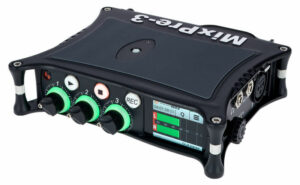 Sound Devices has long been among the gold standard for recorders. Unfortunately they have been priced accordingly and were beyond the budget of many recording enthusiasts. Not so with the MixPre-3! Its small size, durable build, and easy-to-use design are combined with unparalleled sound quality for a surprisingly affordable price. That said, in terms of price the MixPre-3 is still at the high end of the machines we tested.
Sound Devices has long been among the gold standard for recorders. Unfortunately they have been priced accordingly and were beyond the budget of many recording enthusiasts. Not so with the MixPre-3! Its small size, durable build, and easy-to-use design are combined with unparalleled sound quality for a surprisingly affordable price. That said, in terms of price the MixPre-3 is still at the high end of the machines we tested.
Unlike the other recorders in this review, the MixPre-3 has the controls and screen at the top when being worn in the field. This allows easy adjustment and evaluation while recording, and avoids the need to shift the machine each time you want to check the meters. Combine this with a simple but effective design–only three buttons plus a gain knob for each channel–and a very visible LCD touchscreen, and you have a package that is extremely easy to use in the field. Where the MixPre-3 falls short is the hard-to-reach and annoyingly small power switch, situated right next to the power input cable and awkwardly placed when the recorder is in its field case. With practice this becomes less of an issue, but still remains a minor annoyance.
A revolutionary feature of the new MixPre-3 II is 32-bit audio files, which makes it impossible to distort a recording. This means that you no longer need to worry about level setting while recording! At the time of writing, the original MixPre-3 is still available at a reduced price and is all but identical except for the 32-bit functionality, so if price is a concern, this discounted model might be a good buy.
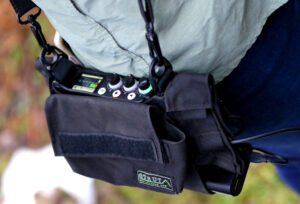 The sound quality of the MixPre-3 is similar to the far more expensive 7-series of Sound Devices recorders, and is clearly the best value for the price. A downside, though, is that this machine eats batteries for breakfast: four AAs barely get you an hour of recording. An optional eight AA battery sled can provide around five or six hours of recording time, but for most uses we recommend an external battery pack. Attaching a large lithium battery like the Anker PowerCore+ 26800 PD extends recording time to around 18 hours. It adds significantly to the weight, which may be an issue for some, but makes for a much better recording experience. Turning down the brightness of the screen and LED monitors can also help with battery life and is recommended.
The sound quality of the MixPre-3 is similar to the far more expensive 7-series of Sound Devices recorders, and is clearly the best value for the price. A downside, though, is that this machine eats batteries for breakfast: four AAs barely get you an hour of recording. An optional eight AA battery sled can provide around five or six hours of recording time, but for most uses we recommend an external battery pack. Attaching a large lithium battery like the Anker PowerCore+ 26800 PD extends recording time to around 18 hours. It adds significantly to the weight, which may be an issue for some, but makes for a much better recording experience. Turning down the brightness of the screen and LED monitors can also help with battery life and is recommended.
Despite these few criticisms, the Sound Devices MixPre-3 still remains the best overall recorder, and comes highly recommended.
Pros: Simple, easy to use, intuitive design. Excellent sound quality. Durable.
Cons: Poor battery life with AA batteries. Power switch hard to reach.
![]() Best budget recorder: Tascam DR-100MkIII ($300)
Best budget recorder: Tascam DR-100MkIII ($300)
If you’re looking for something a little less expensive and more portable than a MixPre-3, we found Tascam’s DR-100, now in its third iteration, to be an excellent option. It’s similar both in terms of price and size to the Zoom H5 and only slightly larger and pricier than the Tascam DR-40X, but we preferred it over both of these models.
The DR-100 sports two options for battery power: a built-in lithium that can be recharged through the USB port and a slot for two AAs. In our tests, it lasted about two hours on the AAs and another six or more with the lithium, so eight hours of recording time would be a reasonable expectation, longer than any of the other recorders we tested except for the ultra-compact units.
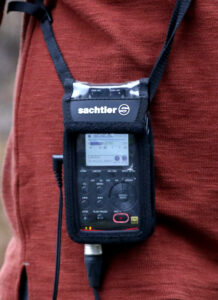 It’s not the smallest option, but is compact enough to carry around easily. Unfortunately, unlike the MixPre-3 but like most other options of a similar size, it has a vertical orientation, so keeping an eye on the screen in the field can be challenging. Field cases for the machine vary from a rather over-enveloping option from PortaBrace (not recommended) to a more stripped down pouch from Sachtler that we find works better, allowing better access to the controls while still providing some protection.
It’s not the smallest option, but is compact enough to carry around easily. Unfortunately, unlike the MixPre-3 but like most other options of a similar size, it has a vertical orientation, so keeping an eye on the screen in the field can be challenging. Field cases for the machine vary from a rather over-enveloping option from PortaBrace (not recommended) to a more stripped down pouch from Sachtler that we find works better, allowing better access to the controls while still providing some protection.
In terms of sound quality, the DR-100MkIII ranked right alongside the Zoom H5 and Marantz PMD661 MkIII, putting it above the less expensive Tascams and Roland R-07, but not as good as the MixPre-3. At less than half the price of the MixPre-3 and with much better battery life, the DR-100 offers good value for its price.
Pros: Fairly small. Good battery life. Good value.
Cons: Vertical orientation. Not as compact as other recorders. Switches prone to accidental movement when put into case.
![]() Best compact recorder: Roland R-07 ($200)
Best compact recorder: Roland R-07 ($200)
While the sound quality doesn’t quite stack up to the more expensive recorders, if you’re looking for an ultra-compact recorder you can slip into your pocket but still connect up to directional microphones, the Roland R-07 is a good compromise.
With a $200 price tag, the R-07 still isn’t the cheapest recording option available, but its combination of small size (less than 4in/10cm long and 2in/5cm wide) and good performance is likely worth the extra money. Physically it feels more solid and higher quality than other compact recorders like the Tascam DR-05X, although we did find that the screen on the R-07 scratched rather easily. The record and stop buttons are rather small and take a little practice to operate efficiently, but once you get used to them they work well.
The biggest downside of the R-07 is the lack of XLR inputs, so an XLR-to-mini cable is needed to attach an external microphone. Unfortunately, this connection is less durable and more prone to interference from your cell phone or a nearby radio tower than an XLR-XLR connection. This also means that this recorder can’t supply phantom power, so make sure the microphone you plan to attach can use a battery to power itself.
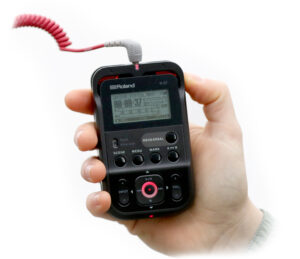 On the positive side, the battery life is phenomenal: we got over 18 hours of recording time out of the unit, despite it only taking two AA batteries. The micro SD card (included) makes sense with the machine’s small build, but it’s a bit difficult to remove, so you may be better off connecting to your computer through the USB port rather than using a card adapter.
On the positive side, the battery life is phenomenal: we got over 18 hours of recording time out of the unit, despite it only taking two AA batteries. The micro SD card (included) makes sense with the machine’s small build, but it’s a bit difficult to remove, so you may be better off connecting to your computer through the USB port rather than using a card adapter.
Overall, the R-07 seems to be a solid choice if you’re looking for a pocket-sized recorder with almost all of the features of a larger machine. It’s so small that it’s unlikely it would work well in a field case, so planning to keep it in a pocket or pouch is probably your best bet. Mounting it on the handle of a shotgun or parabola is also an intriguing possibility.
Pros: Very compact. Easy to use. Sturdy feel. Great battery life.
Cons: No XLR inputs. No phantom power. Too small to operate in a field case. Always records two tracks.
Microphones
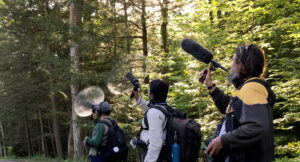 Your microphone is a vital part of your recording system, and using a directional microphone can dramatically increase the quality of your recordings. When it comes to directional microphones, nature recordists have two decisions. First, shotgun microphone or parabolic reflector? And second, which model? The decision between a shotgun and a parabola involves where and what you plan to record, how portable you need your gear to be, and the quality of the recordings you hope to make. You can learn more about the properties of and differences between these two microphone systems on our main microphones page.
Your microphone is a vital part of your recording system, and using a directional microphone can dramatically increase the quality of your recordings. When it comes to directional microphones, nature recordists have two decisions. First, shotgun microphone or parabolic reflector? And second, which model? The decision between a shotgun and a parabola involves where and what you plan to record, how portable you need your gear to be, and the quality of the recordings you hope to make. You can learn more about the properties of and differences between these two microphone systems on our main microphones page.
For the purposes of this review, we compared only shotgun microphone models. Parabolas, while they are the quintessential tools of dedicated bird recordists, have fewer options available, especially in the lower end of the price range. The options are currently limited to Wildtronics and Telinga, with Wildtronics offering the best value with their Pro Mono parabola for $700.
Shotguns, on the other hand, offer a wider range of price options, ranging from the Sennheiser MKH series coming in at well over a thousand dollars, down to budget brands and compact models for under a hundred dollars. With the understanding that many other options exist, we took a look at eight models that seemed promising.
Like recorders, microphones have a few accessories that go a long way to getting the most out of your gear. The two indispensable ones are shock mounts and windscreens. Some of the models we tested come packaged with one or both of these, but in general an additional purchase of higher quality alternatives is recommended. Luckily most shotgun microphones have a similar diameter, making most of the accessories interchangeable between models.
 |
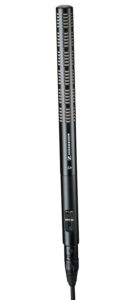 |
 |
 |
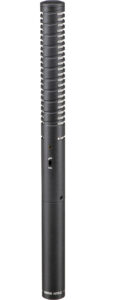 |
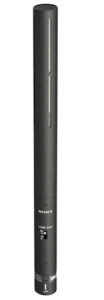 |
 |
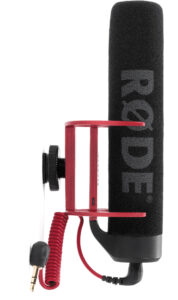 |
|
| Sennheiser ME 67/K6 | Sennheiser ME 66/K6 | Sennheiser MKE 600 | Audio-Technica AT8035 | Rode NTG2 | Sony ECM-673 | Azden SGM-1X | Rode VideoMic Go | |
| Price (Dec 2019) | $500 | $460 | $330 | $269 | $269 | $249 | $169 | $65 |
| Directionality | Long shotgun | Short shotgun | Short shotgun | Long shotgun | Short shotgun | Short shotgun | Short shotgun | Short shotgun |
| Sound quality** | Excellent | Excellent | Good | Fair | Excellent | Fair | Poor | Fair |
| Connector type | XLR | XLR | XLR | XLR | XLR | XLR | XLR | Mini |
| Powering options | Phantom/AA | Phantom/AA | Phantom/AA | Phantom/AA | Phantom/AA | Phantom/AA | AA only | Plug-in power |
| Pros and cons | See review below |
Shorter but also less directional than ME 67
|
See review below
|
No option for using phantom power |
Very compact but not very directional
|
**For the purposes of this review, sound quality was evaluated by recording a standardized sound with the same recorder across all microphones, normalizing this recording, then evaluating frequency response and background noise in the spectrogram.
Best shotgun microphone: Sennheiser ME 67 ($500)
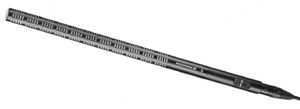 Long the workhorse shotgun mic of nature sound recordists, the Sennheiser ME 67 still offers the best value of any of the options we tested. Along with the much more expensive Sennheiser MKH 70, the ME 67 is one of the longest shotgun microphones available (and thus the most directional), and the sound quality is second to none in its price range. While even the best available microphone on the market has some degree of “self noise” (hiss), this tested lower on the ME 67 microphone than any of the other options we looked at.
Long the workhorse shotgun mic of nature sound recordists, the Sennheiser ME 67 still offers the best value of any of the options we tested. Along with the much more expensive Sennheiser MKH 70, the ME 67 is one of the longest shotgun microphones available (and thus the most directional), and the sound quality is second to none in its price range. While even the best available microphone on the market has some degree of “self noise” (hiss), this tested lower on the ME 67 microphone than any of the other options we looked at.
The ME 67 also performs well in terms of durability–at the Macaulay Library our fleet of these mics has rarely given us any trouble, and extensive testing in nearly every field condition imaginable has proven their hardiness.
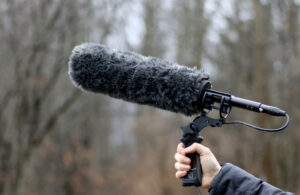 An important thing to note about the ME 67 (and its shorter cousin, the ME 66) is that it requires the purchase of the K6 power supply to function. When buying online, be sure that you purchase both the microphone capsule and a K6, or else you won’t be able to make any recordings! The price we list includes this power unit.
An important thing to note about the ME 67 (and its shorter cousin, the ME 66) is that it requires the purchase of the K6 power supply to function. When buying online, be sure that you purchase both the microphone capsule and a K6, or else you won’t be able to make any recordings! The price we list includes this power unit.
Recommended accessories: K6 power unit (included in quoted price); Rycote Lyre Mount with Pistol Grip Handle (
Pros: Excellent sound quality for price. Good directionality.
Cons: Length makes this model a bit less portable than other models.
![]() Best budget shotgun microphone: Røde NTG2 ($269)
Best budget shotgun microphone: Røde NTG2 ($269)
While the Sennheiser ME series has been the preferred option for many nature recordists, the ~$500 price tag may be too expensive for some. Luckily there are a number of options for recordists with a more limited budget. In this category, we found the Røde NTG2 to be the best combination of quality, price, and size.
While shorter and thus less directional than the Sennheiser ME 67 (and even a bit shorter than the ME 66), the quality of sound was nearly as good. The very slightly higher level of “self-noise” was barely perceptible. The one area where audio quality suffered slightly was in the higher frequencies, where the Røde NTG2 was a bit noisier and less “sharp.” In practical terms, this shouldn’t have much audible effect on most bird recordings, but it is something to consider especially if you plan on recording insects or bats. The shorter length of the Røde NTG2 means that you sacrifice some directionality while gaining portability.
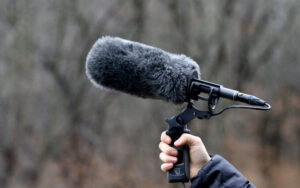 An advantage of the Røde NTG2 is that it comes with the power supply built into the microphone. You can use either an AA battery or phantom power from your recorder, but either way you don’t have to worry about buying an additional part. The Røde also comes with a small windscreen, but we still recommend getting a more robust alternative for anything other than the lightest of breezes.
An advantage of the Røde NTG2 is that it comes with the power supply built into the microphone. You can use either an AA battery or phantom power from your recorder, but either way you don’t have to worry about buying an additional part. The Røde also comes with a small windscreen, but we still recommend getting a more robust alternative for anything other than the lightest of breezes.
Recommended accessories: Rycote Lyre Mount with Pistol Grip Handle (
Pros: Good sound quality for price. More portable than longer shotgun microphone options. Built in power supply.
Cons: Not as directional as longer shotgun microphones. Noise in higher frequencies.
![]() Best compact shotgun microphone: Røde VideoMic Go ($65)
Best compact shotgun microphone: Røde VideoMic Go ($65)
If a couple hundred dollars is still outside what you are looking to spend for a microphone, there are super-compact options that can still offer some improvement in recording quality from internal microphones in your phone or recorder. We did not test this category extensively, but we did include one model, the Røde VideoMic Go, in our tests of more traditional shotgun microphones.
The VideoMic Go is small and portable, as well as quite affordable. Given its small size, its directionality is fairly low, so it doesn’t offer the same focus as a longer shotgun (let alone a parabola). However, the sound quality you get out of it is certainly noticeably better than the built-in microphones of most recorders or smartphones, so you’re still likely to end up with a better recording. It connects via 3.5 mm (mini) port, so it works well with small recorders like the Roland R-07 or Tascam DR-05X, though many higher-end recorders also offer a port to accept microphones like this. It also comes with a cable to connect to many smartphones through a similar 3.5 mm port, and an adapter for Lightning or USB-C can be purchased separately to allow connection to newer Apple or Android phones.
 In short, the VideoMic Go is a good option if you’re looking for something extremely portable and fairly cheap to give your audio a boost over just using your phone or a small recorder with a built in mic. If you have a better recorder or are more serious about audio, then consider investing in one of the shotgun or parabola options mentioned above.
In short, the VideoMic Go is a good option if you’re looking for something extremely portable and fairly cheap to give your audio a boost over just using your phone or a small recorder with a built in mic. If you have a better recorder or are more serious about audio, then consider investing in one of the shotgun or parabola options mentioned above.
Recommended accessories: Rode PG1 – Pistol Grip Shock Mount for Shoe Mounted Microphones ($28)
Pros: Compact. Better quality than built-in microphones. Easy to connect to smartphones.
Cons: Not very directional. Susceptible to wind distortion.


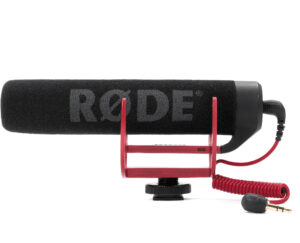 Best compact shotgun microphone: Røde VideoMic Go ($65)
Best compact shotgun microphone: Røde VideoMic Go ($65)